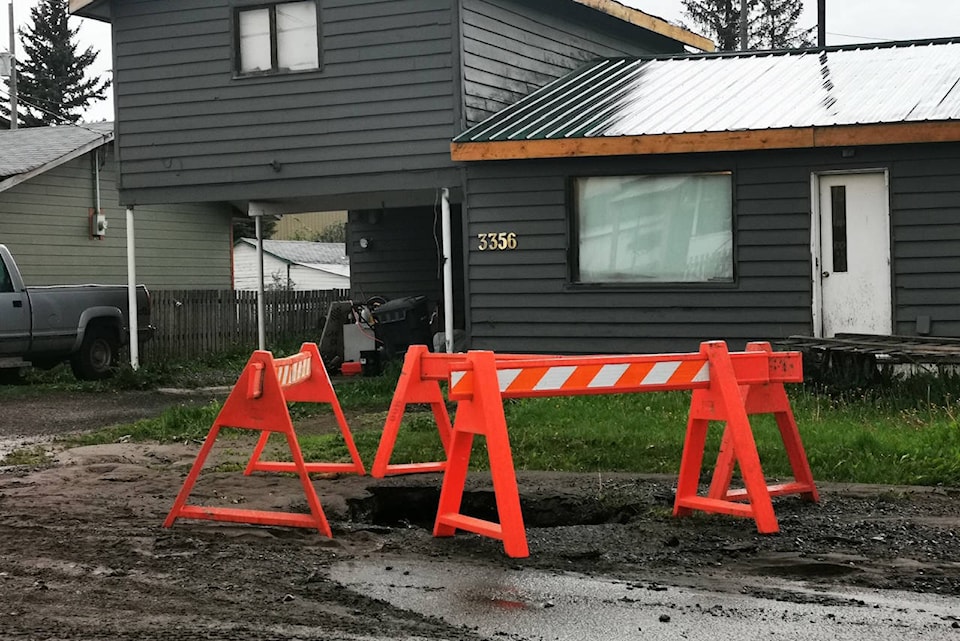When crews had to replace sections of not one but two sanitary service lines running underground across Hagman Crescent the end of May that may have an unexpected event.
But then when a main water line ruptured in the Copeland and 13th Ave. area just several weeks ago, the glimmerings of a pattern emerged of an aging infrastructure network and the challenge of how to pay to replace it.
The Hagman problem first presented itself as an obstruction in one line, something District crews tried at first to resolve with a camera and power auger.
When that didn’t work, equipment was brought in to excavate the line and that’s when crews noticed that several sections cracked, the line was coming apart and generally failing.
“Upon further excavation, the adjacent sanitary service line was exposed and was in similar condition,” an assessment provided by District works manager Chris Lawrence stated.
The lines being at the end of their service life, having improper material such as large rocks placed on top and other improper installation practices were also noted.
Age was also a factor when the main water line in the Copeland and 13th Ave. area broke, resulting in rising water flowing on properties and roads.
“It was determined that this failure was due to the age and material of the waterline, which was 56 years old,” said the District of Houston in a release.
Exactly what underground infrastructure needs replacing, where it is located and how old it is is now the subject of an ongoing effort on the part of the District of Houston and consultants Urban Systems Limited.
That’ll include an idea of cost based on the data the District and estimates for “infrastructure needs being used whee there are no observable condition data,” said District of Houston chief administrative officer Gerald Pinchbeck.
“A good example would be water lines, as a condition assessment can only be performed if the material is excavated.”
While it may be difficult to estimate the state of underground works, the District does have a handle on its above ground road network infrastructure and what’s needed.
“Our roads and sidewalks asset management plan was pretty clear – we would need an average of $1.513 million per year to ensure our paved roads retain a network requiring only regular maintenance, as opposed to full rehabilitation and frequent surface failures,” said Pinchbeck.
“This compares to core funding of $160,000 for repair work (minor overlays, patching) and $200,000 for capital reinvestment (pulverize and pave, mill and fill). This means that we would have an infrastructure deficit of $1.153 million for this one asset class, and not accounting for inflation.”
And earlier report submitted to council by Pinchbeck estimated that the District would need to raise taxes by 30 per cent to come up with the money to fully finance the road network management plan.
It has however used portions of a substantial provincial grant received in 2019 and 2020 to finance specific projects.
And council now has a policy that should a major non-road related project not go ahead that relies on District financing and grants from senior governments, the District money would then be allocated to road works.
